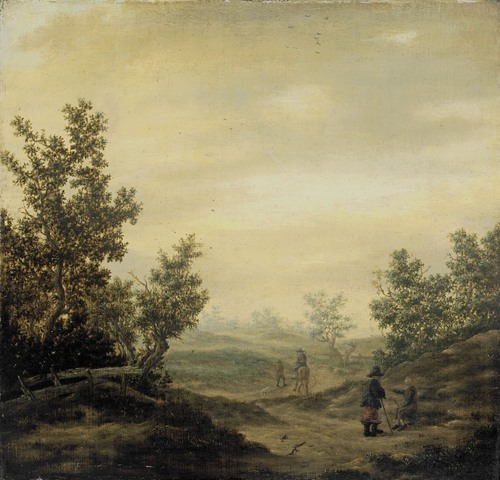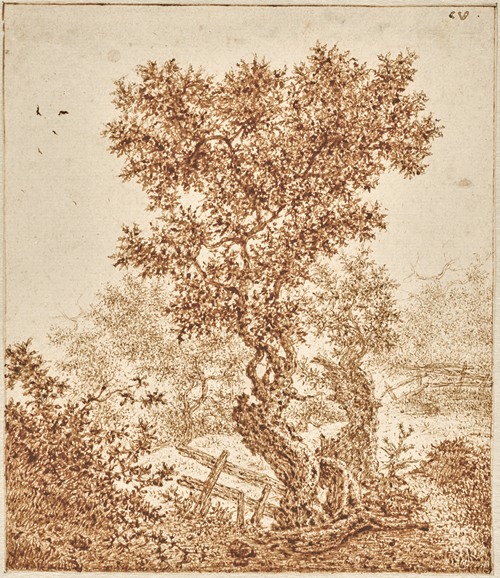

Claes van Beresteyn, was a Dutch Golden Age landscape painter who founded a hofje in his hometown of Haarlem.
He was born in Haarlem as the youngest of 6 children of the lawyer Paulus van Beresteyn and his third wife Catharina van der Eem. His portrait as a child was added to the family portrait in a long swathe of canvas on the right hand side. This canvas was later sold in the 19th century to the Louvre as a Frans Hals painting, though later analysis by art historians have since disputed its attribution to Pieter Soutman. On 5 January 1644 he became a member of the Haarlem Guild of St. Luke as a pupil of Salomon de Bray and became an etcher and landscape painter in the manner of Cornelis Vroom and Adriaen Hendriksz Verboom. His sister Elisabeth married his friend, the horse painter Pieter Cornelisz Verbeeck, who also painted a portrait of Claes. His brother Arnold also became a painter and in 1637 had been a pupil of Willem Heda. Arnold died young and no works survive.
Claes never married and lived in the house of his parents in the Zijlstraat, where he drew up his will on 18 June 1677 with the notary Gellinckhuizen to create a hofje for 12 elderly Catholic women.

